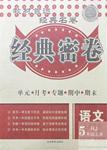题目内容
16.已知向量$\overrightarrow{a}$,$\overrightarrow{b}$满足|$\overrightarrow{a}$|=|$\overrightarrow{b}$|=$\overrightarrow{a}$•$\overrightarrow{b}$=2,向量$\overrightarrow{c}$满足($\overrightarrow{a}$-$\overrightarrow{c}$)•($\overrightarrow{b}$-$\overrightarrow{c}$)≤0,则|$\overrightarrow{c}$|的最小值为$\sqrt{3}$-1.分析 根据条件可以求出向量$\overrightarrow{a},\overrightarrow{b}$夹角为$\frac{π}{3}$,从而可设$\overrightarrow{a}=(2,0),\overrightarrow{b}=(1,\sqrt{3}),\overrightarrow{c}=(x,y)$,进行数量积的坐标运算便可得到${x}^{2}-3x+2+{y}^{2}-\sqrt{3}y≤0$,从而得出$(x-\frac{3}{2})^{2}+(y-\frac{\sqrt{3}}{2})≤1$.这便说明点(x,y)在以($\frac{3}{2},\frac{\sqrt{3}}{2}$)为圆心,1为半径的圆上及圆内的点,画出图形,根据图形便可求出点(x,y)到原点的最小距离,从而得出$|\overrightarrow{c}|$的最小值.
解答 解:根据条件$cos<\overrightarrow{a},\overrightarrow{b}>=\frac{\overrightarrow{a}•\overrightarrow{b}}{|\overrightarrow{a}||\overrightarrow{b}|}=\frac{1}{2}$,∴$<\overrightarrow{a},\overrightarrow{b}>=\frac{π}{3}$;
∴设$\overrightarrow{a}=(2,0),\overrightarrow{b}=(1,\sqrt{3})$,$\overrightarrow{c}=(x,y)$,则:
$\overrightarrow{a}-\overrightarrow{c}=(2-x,-y),\overrightarrow{b}-\overrightarrow{c}=(1-x,\sqrt{3}-y)$;
∴$(\overrightarrow{a}-\overrightarrow{c})•(\overrightarrow{b}-\overrightarrow{c})={x}^{2}-3x+2+{y}^{2}-\sqrt{3}y≤0$;
∴$(x-\frac{3}{2})^{2}+(y-\frac{\sqrt{3}}{2})^{2}≤1$;
∴(x,y)表示以$(\frac{3}{2},\frac{\sqrt{3}}{2})$为圆心1为半径的圆上及圆内部;
$|\overrightarrow{c}|=\sqrt{{x}^{2}+{y}^{2}}$表示点(x,y)到原点的距离,如图所示:
连接圆心和原点O,与圆的交点到原点的距离最小;
∴$|\overrightarrow{c}|$的最小值为$\sqrt{3}-1$.
故答案为:$\sqrt{3}-1$.
点评 考查利用向量坐标解决向量问题的方法,向量夹角余弦的坐标公式,向量夹角的概念,以及向量数量积的坐标运算,圆的标准方程,表示圆上及圆内部点的不等式,以及数形结合解题的方法.

 作业辅导系列答案
作业辅导系列答案 同步学典一课多练系列答案
同步学典一课多练系列答案 经典密卷系列答案
经典密卷系列答案| A. | α+β=π | B. | α-β=π | C. | α-β=(2k+1}π,k∈Z | D. | α+β=(2k+1}π,k∈Z |
| A. | $\overrightarrow{a}$=(-2,3),$\overrightarrow{b}$=(3,-2) | B. | $\overrightarrow{a}$=(2,3),$\overrightarrow{b}$=(-2,-3) | C. | $\overrightarrow{a}$=($\sqrt{2}$,-1),$\overrightarrow{b}$=(1,$\sqrt{2}$) | D. | $\overrightarrow{a}$=(1,$\sqrt{2}$),$\overrightarrow{b}$=($\sqrt{2}$,2) |